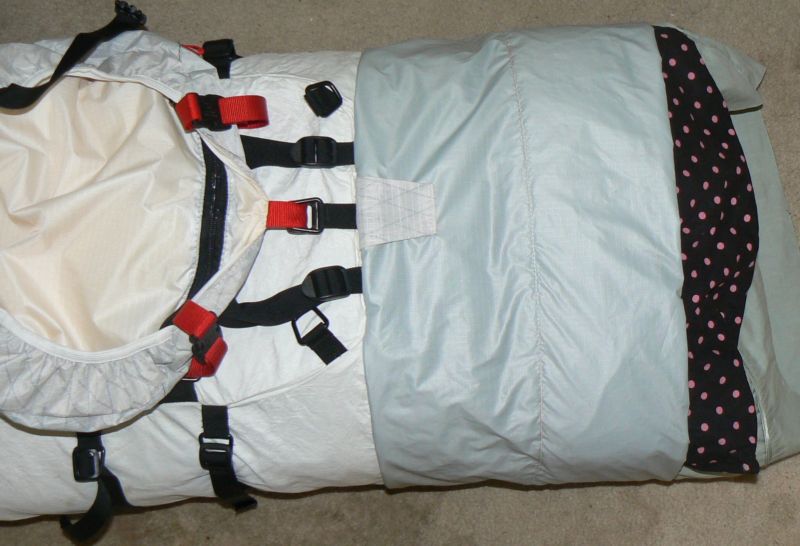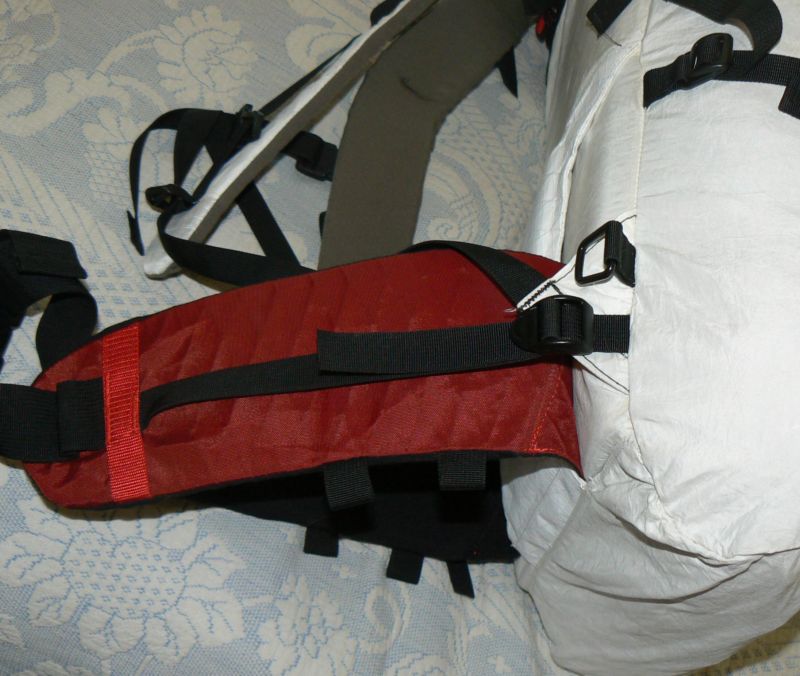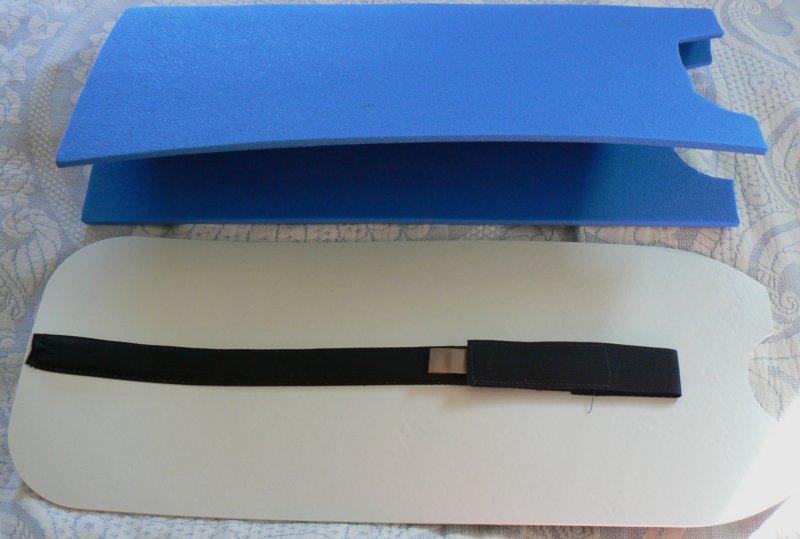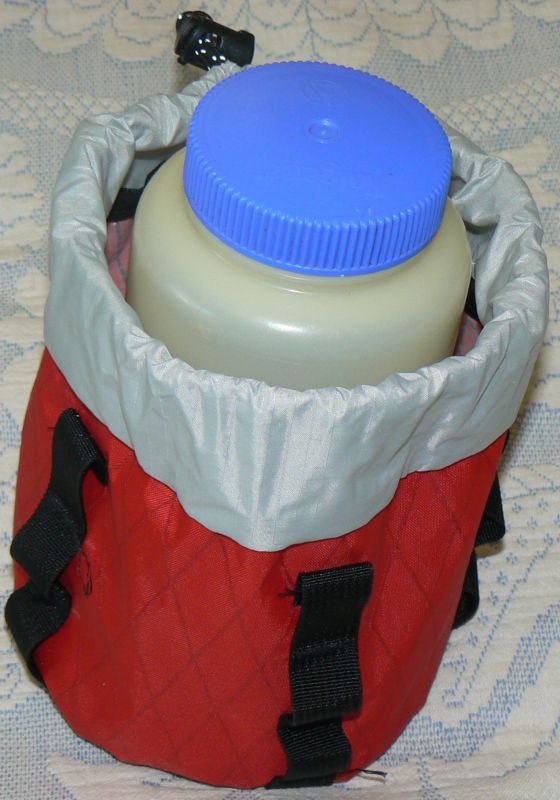|
I contacted Cilogear and ordered a hipbelt Apr-17-2023. I spoke to them Jun-20-2023 and I was told it would ship that week. I spoke to them Jul-25-2023 and was told it would ship that day. I spoke to them around Aug-03-2023 and was told it should arrive Aug-04-2023. It never arrived. I sent them some emails and called them several times. No emails were answered and they never answered their phone again. I have seem a few posts on Facebook from Cilogear. I don't know if the company is still in business. I don't know if you order gear that it will ever arrive. I think they make great gear, but you need a company to stand behind their gear.
As a point in contrast, I bought a very high quality sleeping bag on ebay that was made in 1995. It had an issue and needed to be repaired. Even though the company had moved twice since 1995, they still existed. They answered my email within a day or so. I shipped them the broken part, and in a few weeks I had the repaired/replaced part back.
I bought a used CiloGear V3.5 45 Dyneema WorkSack, medium size. I had always wanted a quality dyneema daypack, and I finally got one. This is a 45 liter pack which is designed for alpine climbing, which is somewhat different from a general purpose pack. It is designed to carry two ice tools (ice axes). That isn't very unusual, as many packs have the same features. The way the ice tools are attached are of a superior design to other packs. The pack is generally of a streamlined design, with little sticking out. That is pretty important for a climbing pack, but not so important for general use. It's construction is a bit more complex than any other pack that I am familiar with. It is more modular and configurable than any other pack that I know of. The quality of workmanship is first rate, and overall it is the best designed pack that I have ever seen. I will be comparing this pack with the WildThings Icesac which is another pack designed for alpine climbing.
The pack had a few issues when I bought it. Though it was advertised as never being used, it was incomplete. A few straps were missing, including the sternum strap. The central pad of the hip belt was missing (it is removable). It was also missing the hip belt compression strap attachment points (which are sewn to the pack). I sent the pack in to be repaired. The attachment points were added to the pack. the central pad area of the hip belt was replaced with a newer version. The shoulder straps were replaced with a newer version. The extension skirt was replaced with a newer version. I have photos of the original pack as well as the repaired / upgraded pack.

This is a view of the back of the pack. Many features of the pack are visible. The central area of the pack is reinforced and has attachment points for crampon straps to secure a pair of crampons on the back of the pack. The two white triangle shaped pieces of material (that have reflective tape on one side) are where the heads of the ice tools go. The ice tool heads are secured with the side release buckles next to the white triangular material. The shaft of the ice tools are secured with the black cords that are higher up on the pack. The doubled cord is wrapped around the shaft, and then the cord is looped over the cord toggle. Then the cord toggle is tightened to secure the cord loop. The cord is 1/8 inch elastic, which replaces the Sterling Glo-Cord found on the v3 pack. Either is strong enough, but the elastic will eventually wear out.

This is a close up of the tool holders on the pack. There is a flap of material sewn to the pack at both ends that secures the head of the tool. The shaft near the head is secured with the black side release buckle. The inside of the flap of material is edged with reflective material to make it easy to see in low light conditions. Visible on the side of the crampon holder is a 'Dee-clip' which is what makes the pack so configurable. There is no central lower dee-clip as there was on the v3 pack.



The first picture shows the old gray skirt extension. It is made of two layers of 70 denier Cordura ripstop nylon coated with silicone, which is very lightweight, and abrasion resistant. It is slightly heavier material than the v3 pack's skirt. Since it is usually inside the pack, it doesn't need to be as robust as the normal exterior of the pack. You can see there are two draw-cords, one near the bottom of the skirt, which is the one that is usually used. They are Sterling Rope's Glo-Cord, which is 2.75mm cord with a reflective exterior, which is an improvement over the v3 pack's cord. When the skirt is used, the drawcord on the top of the skirt is used. Also visible in this picture is the brown haul strap on the back of the pack.
The second and third pictures show some close-ups of the skirt extension. I used some pillows to fill the pack, one of which is greenish/gray and the other black with pink dots. I think the old skirt extension white part was dyneema, and the new one looks like some kind of VX fabric. The new skirt is longer than the old skirt. I think the new skirt material is a bit heavier than the old one. The small white area in the third picture is where a hydration tube can exit the pack.

This is the side of the pack. The lid of the pack is on. Working down from the lid, is one black compression strap, a red compression strap, and a blue and red two piece compression straps. These straps are removable. You can arrange the straps at a diagonal. The owners manual describes some of the many possible options for using the straps. Near the bottom of the pack is a stripe of reflective material. Below that, is the bottom of the pack which is made of a second layer of dyneema, as much wear occurs near the bottom of the pack. It is quite robust.



This is the front of the pack, i.e. the part which rests against your back. The lid is on the pack, and there is a reflective stripe of material next to the external lid zipper. The lid attaches to the pack with two adjustable red straps, as well as a dee-clip in the center. If you use the skirt to load lots of stuff in the pack, the central dee-clip is disconnected and two higher dee-clips can be used to attach the lid, rather than the lower dee-clips. This is a much more elegant way to attach the lid than the WildThings Icesac's lid. Next to the lid, is a brown haul strap. Below that, is a piece of 1.5 inch wide black webbing. This is where the top of the shoulder straps attach to. The tops of the shoulder straps consist of two layers of 1.5 inch black webbing which is bartacked to the white material of the shoulder strap as well to the 1.5 inch wide black webbing on the pack. This makes a very strong flexible mounting point for the shoulder straps. Not visible, is the bottom of the shoulder straps which attach to a double thickness triangle of material which is the same material as the bottom of the pack. The shoulder straps have load transfer straps which attach to the top of the frame of the pack, and their attachment point on the shoulder strap is adjustable with the black slider visible on the shoulder straps. There is also a removable sternum strap which is adjustable up and down. The shoulder straps are made with a 2.5 layer laminate using a thin layer of hard foam surrounded by softer foam, unlike the v3 straps which use denser foam and a very hard outside layer.
The second picture is the pack with the new shoulder straps. I think they are curved more sharply than the old straps. The third picture is a close up of the shoulder straps. The white part is some kind of VX fabric.


This is the hip belt. It is pretty similar in construction to the shoulder straps. It uses 2.5 layers of foam, like the shoulder straps. The v3 hip belt was like the v3 shoulder straps, with two layers. The belt is a single piece, with some velcro in the center. On the bottom of the pack is a white, padded sacrum pad with a slot in it, and some velcro which mates with the hip belt velcro. The pack frame height is adjustable by three inches, based on how the hipbelt is attached. This is very similar to the way the Kelty cloud packs adjust. The close up of the belt shows the outside of the belt in red. There are attachment points on the end of the belt for gear loops, which are generally used to hold rock climbing gear while climbing. The v3 belt has two loops per side, this belt has one loop per side. The hip belt attaches in the front using 1.5 inch webbing and a standard side release plastic buckle. The 3/4 inch black webbing visible on the belt attaches to the sides of the frame and is used to pull the pack in close to your body. This attachment point was missing when I bought the pack. CiloGear fixed it for free.



This is the pack lid. The top of the lid is made out of dyneema fabric. The sides of the lid are made out of some kind of VX fabric (the white fabric with the diamond pattern). There are six lash points around the perimeter of the lid. There is 1/8 inch elastic cord attached. I believe these are designed to secure a climbing helmet, but could be used for other things. On the bottom of the lid is a separate compartment from the main lid compartment, with the zipper half open in the picture. Unlike the v3 pack, there are no zipper pull cords, though they could be very easily added if desired. The last picture shows the side view, which shows the reflective material next to the main compartment zipper. It features two zipper pulls as well as an urethane coating on the zipper fabric and teeth for water proofing. You can see the three red straps which are used to attach the lid to the pack. Since the main pack has a drawstring, the lid isn't really needed, and can be left off if desired.


Unlike the WildThings Icesac, the CiloGear pack has a frame. The frame consists of a piece of thin, quite dense foam (2.3 lb per cf) folded in half (its blue). Next to the foam is a thin framesheet (its white) made of HDPE. In the center of the framesheet is black material which contains a pocket for an aluminum framestay. The top of the pocket is secured with velcro. New for v3.5 is a gray nylon tab to make it easier to remove the stay.
There are some people who think frames aren't necessary. Perhaps for actually doing technical climbing, or for really light loads under 20 lbs. For all other occasions, I really like having a frame to transfer the weight. This frame isn't as robust as my McHale's frame (which is a 80 liter pack), but it is the most robust frame I have seen in a 40 liter pack.



The foam and framesheet go inside a pocket inside the pack. The top of the frame pocket has a flap that folds over and velcros to secure the frame. On the flap is an orange zippered gear pocket. Another feature of this pack is an internal compression strap which is visible in the second picture. The end sewn to the pack has some reflective fabric on it, as well as the other end of the strap, which I tied to the middle of the strap to make it easier to photograph. There is a plastic side release buckle for the compression strap. The v3.5 pocket is significantly bigger than the v3 pocket and it has the 2 by 4 inch CiloGear logo patch. Note in the bottom picture is a large open pocket next to the framesheet, made out of silnylon. It is for a hydration bladder, and is found on newer packs.



I bought a removable side pocket, size large. The large size is supposed to be able to hold a one liter water bottle in an insulated cozy. The first picture shows an one liter bottle in the pocket. I am certain it would fit with an insulated cozy. The second picture shows the inside of the pocket, which shows the bartacks used to hold on the webbing on 4 sides of the pocket. Also the main seams have been covered with nylon fabric tape to reinforce the seams. There is a central grommet for drainage. The third picture shows the bottom of the pocket. It is made of VX-42 which is thicker than the side and more abrasion resistant.
The pack is constructed with a wide variety of fabrics:
The pack comes with very little sewn onto it. There are many dee-clips, which are made out of steel and sliplocks (double D rings), which are made out of acetal, sewn onto the pack with webbing. You can attach a wide variety of straps on the pack to these dee-clips and sliplocks. You can compress the pack without the use of straps by mating the one or more pairs of the appropriate dee-clip and sliplock on the sides of the pack. I find that quite elegant. You can remove the lid as well as the hip belt. You can remove the foam padding as well as the framesheet (though it is unlikely I ever would). There are many places to strap things onto the pack, such as the six lash points on the top of the lid, and the gear loop attachment points on the hipbelt. You can use the extension skirt, and carry really bulky items, or use the pack as an emergency bivy and stick the lower half of your body inside of it.
One small detail I appreciate is that most of the straps are 0.75 inches wide. This is wide enough to not get twisted up, and plenty strong for virtually any use. My WildThings IceSac uses mostly heavy 1 inch webbing, which is overkill in my opinion.
If you have comments or suggestions, Email me at turbo-www@weasel.com
Created with gnu emacs and template-toolkit, not some sissy HTML editor.
No Java or javascript needed to view my web pages. They
both have significant security issues.